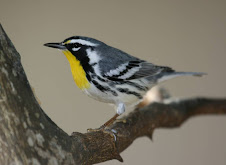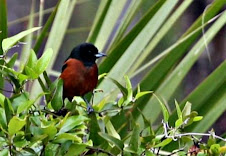
Carol took this shot at Mashes Sands. How many species can you pick out?







| Rank | City | Checklists |
| 1 | Charlotte, North Carolina | 493 |
| 2 | Mentor, Ohio | 460 |
| 3 | Tallahassee, Florida | 437 |
| 4 | Richmond, Virginia | 359 |
| 5 | Winston-Salem, North Carolina | 326 |
| 6 | Durham, North Carolina | 294 |
| 7 | Cincinnati, Ohio | 282 |
| 8 | Virginia Beach, Virginia | 271 |
| 9 | Knoxville, Tennessee | 264 |
| 10 | Birmingham, Alabama | 258 |
| Statistics updated 11-Feb-2008 14:11 ET | ||
| Rank | City | Species |
| 1 | Corpus Christi, Texas | 185 |
| 2 | Savannah, Georgia | 166 |
| 3 | Rockport, Texas | 165 |
| 4 | Tallahassee, Florida | 151 |
| 5 | Lakeport, California | 142 |
| 6 | Jacksonville, Florida | 139 |
| 7 | Mission, Texas | 137 |
| 8 | Saint Petersburg, Florida | 135 |
| 9 | Weslaco, Texas | 134 |
| 10 | Wilmington, North Carolina | 133 |
| Statistics updated 11-Feb-2008 14:11 ET | ||
| Rank | City | Individuals |
| 1 | Yakima, Washington | 299,102 |
| 2 | Smithville, Missouri | 243,160 |
| 3 | Dugger, Indiana | 217,020 |
| 4 | Mannington Mills, New Jersey | 150,403 |
| 5 | Clewiston, Florida | 143,748 |
| 6 | Woodstown, New Jersey | 130,981 |
| 7 | Parsons, Kansas | 102,709 |
| 8 | Ashburn, Virginia | 101,735 |
| 9 | Tallahassee, Florida | 76,113 |
| 10 | Willard, Utah | 50,956 |
| Statistics updated 11-Feb-2008 14:11 ET | ||
September 23, 2008
New York, NY and Ithaca, NY—Bird and nature fans throughout North America are invited to join tens of thousands of everyday bird watchers for the 12th annual Great Backyard Bird Count (GBBC), February 13-16, 2009.
A joint project of the Cornell Lab of Ornithology and the National Audubon Society, this free event is an opportunity for families, students, and people of all ages to discover the wonders of nature in backyards, schoolyards, and local parks, and, at the same time, make an important contribution to conservation. Participants count birds and report their sightings online at www.birdcount.org.
“The Great Backyard Bird Count benefits both birds and people. It’s a great example of citizen science: Anyone who can identify even a few species can contribute to the body of knowledge that is used to inform conservation efforts to protect birds and biodiversity,” said Audubon Education VP, Judy Braus. “Families, teachers, children and all those who take part in GBBC get a chance to improve their observation skills, enjoy nature, and have a great time counting for fun, counting for the future.”
Anyone can take part, from novice bird watchers to experts, by counting birds for as little as 15 minutes (or as long as they wish) on one or more days of the event and reporting their sightings online at www.birdcount.org. Participants can also explore what birds others are finding in their backyards—whether in their own neighborhood or thousands of miles away. Additional online resources include tips to help identify birds, a photo gallery, and special materials for educators.
The data these “citizen scientists” collect helps researchers understand bird population trends, information that is critical for effective conservation. Their efforts enable everyone to see what would otherwise be impossible: a comprehensive picture of where birds are in late winter and how their numbers and distribution compare with previous years. In 2008, participants submitted more than 85,000 checklists.
“The GBBC has become a vital link in the arsenal of continent-wide bird-monitoring projects,” said Cornell Lab of Ornithology director, John Fitzpatrick. “With more than a decade of data now in hand, the GBBC has documented the fine-grained details of late-winter bird distributions better than any project in history, including some truly striking changes just over the past decade.”
Each year, in addition to entering their tallies, participants submit thousands of digital images for the GBBC photo contest. Many are featured in the popular online gallery. Participants in the 2009 count are also invited to upload their bird videos to YouTube; some will also be featured on the GBBC web site. Visit www.birdcount.org to learn more.
Businesses, schools, nature clubs, Scout troops, and other community organizations interested in the GBBC can contact the Cornell Lab of Ornithology at (800) 843-2473 (outside the U.S., call (607) 254-2473), or Audubon at citizenscience@audubon.org or (202) 861-2242, Ext 3050.
The Great Backyard Bird Count is made possible, in part, by support from Wild Birds Unlimited.
















